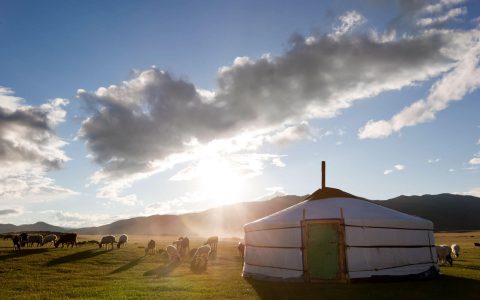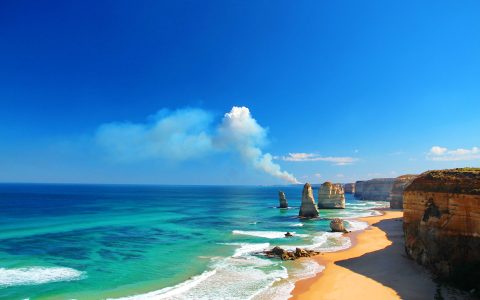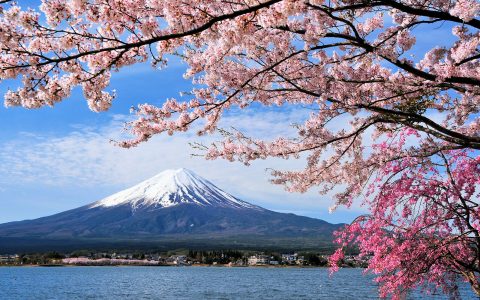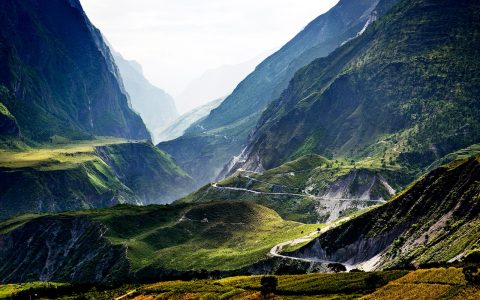Biking the Silk Road
![]() China’s Silk Road offers a window into the past, both recent and ancient. But how do you find, let alone follow, a route that’s more metaphysical than tangible? Answer: Follow B&R’s Tyler Dillon. China has always impressed with its vastness. Names invariably come with mind-boggling numbers attached: Chongqing (pop. 31 million); the Yangtze (6,380 km (3,960 mi.) long, the world’s third-longest river); Three Gorges Dam (capacity: 25,000 megawatts); the Great Wall (over 6,400 km (4,000 mi.) long, constructed by millions over centuries). But then, with an estimated population topping a billion, large-scale thinking is key.
China’s Silk Road offers a window into the past, both recent and ancient. But how do you find, let alone follow, a route that’s more metaphysical than tangible? Answer: Follow B&R’s Tyler Dillon. China has always impressed with its vastness. Names invariably come with mind-boggling numbers attached: Chongqing (pop. 31 million); the Yangtze (6,380 km (3,960 mi.) long, the world’s third-longest river); Three Gorges Dam (capacity: 25,000 megawatts); the Great Wall (over 6,400 km (4,000 mi.) long, constructed by millions over centuries). But then, with an estimated population topping a billion, large-scale thinking is key.
Here’s one more: the Silk Road. A 3,000-year-old, 6,400-km-long commercial highway that linked continents, empires and cultures. It’s out here, far away from the big cities and official records, that all those head-swimming numbers start to lose their magic. The figures are impressive, sure, but they fall laughably short in describing the role this ancient trade route played—and still plays—in spreading art, commerce and religion across Asia and throughout the world. Statistics can tell you many things, but they can’t express the incredible human history that has been written here. Tyler Dillon, a well-travelled B&R guide and Regional Director for the Silk Road, says it best: “I’ve lived and worked in Asia for the past seven years, and I’ve never been able to get the Silk Road out of my system. The exoticness and uniqueness of the region is unlike anywhere I’ve ever been.”
 “People are always amazed when I tell them we ride bicycles on the Silk Road,” he continues. “I think they envision it as this huge, barren landscape and forget that there are all sorts of oases and lush forests along the way, too.”
“People are always amazed when I tell them we ride bicycles on the Silk Road,” he continues. “I think they envision it as this huge, barren landscape and forget that there are all sorts of oases and lush forests along the way, too.”
Travelling the Chinese portion of the Silk Road presents the adventurer with literally thousands of indelible sights, sounds and scents. B&R’s Silk Road explores the northwestern quadrant of the country, a region known for its arid deserts, remote oasis cities and unique culture. Geographically, western China has more in common with the Middle East—or even Mars—than Beijing, as vast swathes of desert stretch out in all directions from isolated outposts. Nothingness is actually a big draw out here. Few who have experienced it will deny that sitting astride your bike, gazing out into the 270,000 sq. km (100,000 sq. mi.) of sand and blissful emptiness of the Taklamakan Desert is a life-altering highlight. Not surprisingly, taklamakan loosely translates from Uyghur as “once you go in, you won’t come out.”
[quote]The exoticness and uniqueness of the region is unlike anywhere I’ve ever been[/quote]
 The underexplored cities along the Silk Road can feel like buried treasures. Kashgar, on the extreme western edge of China near the borders with Kyrgyzstan and Tajikistan, has served for centuries as a vital crossroads and resupply depot for caravans headed east to Dunhuang and west into Iran. One of the best-preserved representations of a traditional Islamic city anywhere in the world, Kashgar looks, feels and sounds nothing like what you’d expect from China. White-domed mosques dot the skyline, and most residents are Uyghurs, a Turkish ethnic group.
The underexplored cities along the Silk Road can feel like buried treasures. Kashgar, on the extreme western edge of China near the borders with Kyrgyzstan and Tajikistan, has served for centuries as a vital crossroads and resupply depot for caravans headed east to Dunhuang and west into Iran. One of the best-preserved representations of a traditional Islamic city anywhere in the world, Kashgar looks, feels and sounds nothing like what you’d expect from China. White-domed mosques dot the skyline, and most residents are Uyghurs, a Turkish ethnic group.
Silk Road: A Series of Destinations
It’s a city that has witnessed dynamic change over the centuries, from Arab invasions, Mongol raids, the religious Tungani Revolt and “The Great Game,” a strategic geopolitical showdown between Britain and Russia in the early 1900s. Some changes, as Tyler explains, happen faster than others:
“My most powerful memory of Kashgar comes from when I led a group of travellers to the old British consulate there. It had become a restaurant, and after conversing with the owners in the Turkish dialect spoken in that part of the country, they agreed to unlock the upper floor where the diplomat had lived and let us look around. Amazingly, his clothes were still there, neatly folded and placed on the shelves to sit undisturbed for a hundred years. It looked like they must have left in a hurry!”
 “Those small, lived-in details are where the Silk Road experience lies, and Tyler has a million of them. “One time, we were in Dunhuang,” he says, “and we discovered this Buddhist monastery that was being maintained by the descendants of a famous monk who guarded the caves of the Buddhas. They invited us in for tea, and once inside, I realized their monastery surrounded the last western guard tower of the Great Wall of China! There we were—me, 12 travellers and these monks—sipping tea on what was once the outer limit of the Chinese empire. We weren’t just visiting anymore, we were exploring. We were like 12 Indiana Joneses with bikes instead of horses!”
“Those small, lived-in details are where the Silk Road experience lies, and Tyler has a million of them. “One time, we were in Dunhuang,” he says, “and we discovered this Buddhist monastery that was being maintained by the descendants of a famous monk who guarded the caves of the Buddhas. They invited us in for tea, and once inside, I realized their monastery surrounded the last western guard tower of the Great Wall of China! There we were—me, 12 travellers and these monks—sipping tea on what was once the outer limit of the Chinese empire. We weren’t just visiting anymore, we were exploring. We were like 12 Indiana Joneses with bikes instead of horses!”
The cities along its route are indeed incredible, but the Silk Road isn’t a destination or a series of destinations. It’s not even really a tangible place—its route is long, wide and unmarked. What the Silk Road is is a journey, a story, a state of mind. “That’s part of the adventure of travelling the Silk Road,” Tyler says. “Here, you’re visiting places that few outsiders have seen or will ever see, beyond explorers and mapmakers. It’s a humbling experience.”
“Steinbeck once wrote: ‘We do not take a trip; a trip takes us.’” he continues. “Every time I read that, I always think, ‘That’s the Silk Road in a nutshell.’”
MORE FROM Asia-Pacific + China

Biking in Cambodia with B&R Expert Guide Fin
Cambodia
The Slow Fund: Rice Production with Ozuchi Village
Japan
Take a Virtual Ride on the Hai Van Pass in Vietnam
Vietnam
How Three Cambodian Hotels Are Joining Forces to Feed Their Communities
Cambodia
Meet Fin—B&R’s Expert Guide in Cambodia
Cambodia
An Insider’s Eye on Vietnam: What to See and What to Skip, According to our Vietnam Expert
Vietnam
Photo Essay: Exulting in Mongolia’s Eternal Blue Sky
Mongolia
The Best Times of Year to Travel to Asia
Vietnam
Chris Litt: On Mongolia and the Desire to Disconnect
Mongolia
Top 6 Multi-Day Walks in Australia
Australia
The 8 Best Restaurants in Auckland
New Zealand
The 5 Best Restaurants in Wellington
New Zealand
8 Reasons Why You Need to Take an Australian Adventure
Australia
Cultural Quirks About Bhutan That Will Blow Your Mind
Bhutan
5 Things to Know Before You Go to Japan
Japan
8 Favourite Restaurants to Eat in Queenstown
New Zealand
10 Must-Try Australian Wines
Australia
Where to Eat in Hong Kong: 7 Best Restaurants
China
A Kiwi’s Guide to Enjoying New Zealand
New Zealand


